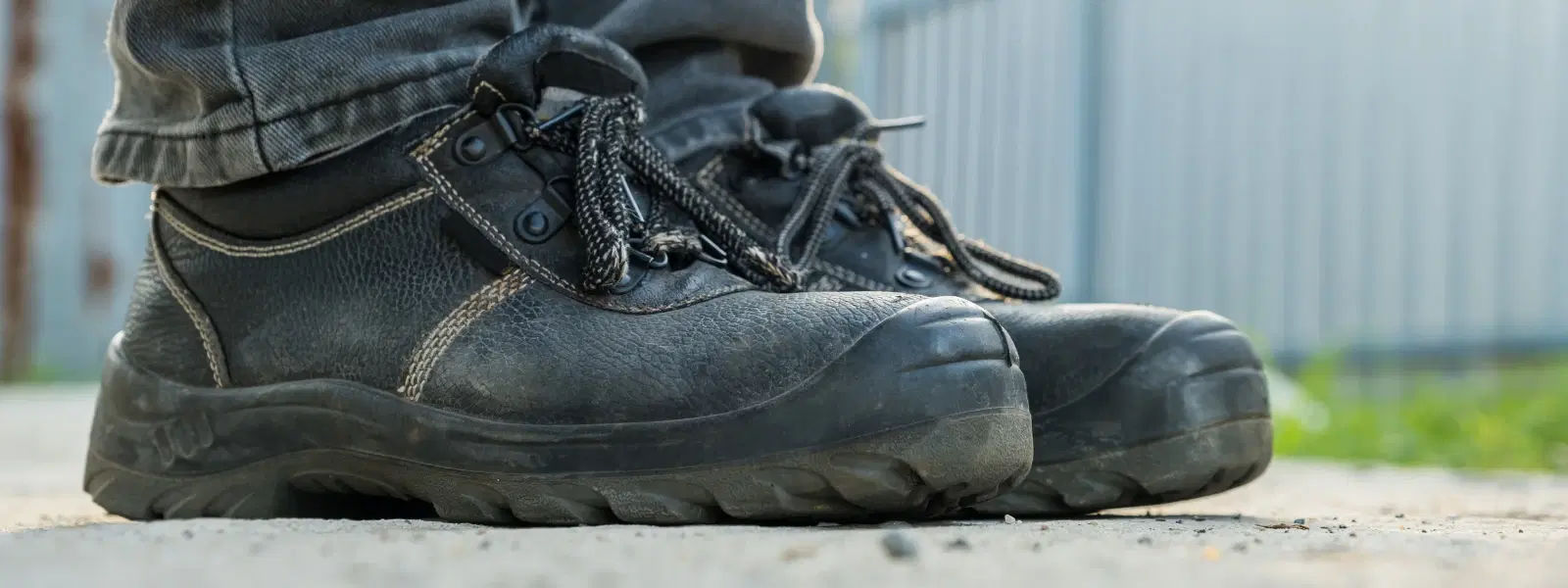
Footwear Guide
•04 min read

Choosing the right footwear can be a game changer when embarking on a new adventure. Whether you lean towards the rugged vibe of hiking boots or the nimble charm of trekking shoes, this guide unpacks the differences so you can decide on the best hiking footwear for your journey. Read on to learn about the key features that establish comfort, durability, and style in outdoor footwear.
Hiking boots are designed for challenging, uneven terrains and heavier loads. They offer robust construction with reinforced materials that ensure durability and lasting performance. Many hiking boots also come with waterproof hiking boots technology such as Gore-Tex linings to protect against wet conditions. With high-cut designs, these boots provide excellent ankle support, making them ideal for long treks across rocky paths and rugged landscapes.
In contrast, trekking shoes are crafted for those who need lightweight, agile footwear for their adventures. The design emphasizes ease of movement and comfort, making these comfortable hiking shoes perfect for casual or day hikes. Their lower-cut structure enhances agility, while breathable trail shoes keep your feet cool during long treks in warm climates. If you are looking for supportive outdoor footwear that doesn’t compromise on ease and ventilation, trekking shoes might just be the right pick.
When deciding between hiking boots and trekking shoes, it is essential to weigh their advantages against any potential drawbacks. Hiking boots come as durable trail boots that stand up to rough, continuous use. They provide superior ankle support hiking boots that reduce injury risk, and their weather-resistant designs, like waterproof hiking boots, ensure you stay dry and comfortable in adverse conditions. However, these benefits come with a trade-off: hiking boots tend to be heavier and bulkier. They may require a break-in period, but the robust build makes them ideal for heavy-duty adventures.
Trekking shoes, on the other hand, are all about lightweight trekking shoes for enhanced mobility and reduced fatigue. They offer excellent comfort for shorter trips and are designed with breathable trail shoes that provide superior ventilation. Their agile and flexible design makes them a smart choice for moderate terrain. However, the lower profile means they may not offer the same level of ankle support compared to hiking boots, and they might not be as durable for long extended backpacking treks.
When you choose between hiking boots and trekking shoes, the nature of your adventure plays a vital role. For those trekking rugged terrains with heavy loads, factors such as the type of terrain and weather conditions cannot be ignored. Durable trail boots, waterproof hiking boots, and supportive outdoor footwear are critical for rocky or unpredictable paths. For backpackers carrying heavier gear, leveraging a reliable backpacking boot guide can ensure that your feet remain supported, reducing the risk of injuries. Consider the weather patterns and invest in waterproof hiking boots if you know that wet conditions are likely.

For lighter adventures or flat to moderately uneven trails, lightweight trekking shoes and comfortable hiking shoes provide versatility and superior performance without excessive weight. When choosing, keep in mind that breathable trail shoes are perfect for warm climates, ensuring your feet remain cool. The right choice depends on matching the shoe’s design with the specific requirements of your adventure, be it long hauls with heavy loads or shorter recreational hikes with an emphasis on speed and agility.
The longevity and performance of your outdoor footwear largely depend on the materials used in their construction. When selecting hiking boots, various hiking boot materials are at your disposal. Leather is a classic option known for its durability and excellent weather resistance, even though it might need more care over time. Synthetic alternatives offer a lighter option and tend to break in quickly, although they may not stand up to heavy wear as effectively. Additionally, technologies like Gore-Tex take waterproof hiking boots to the next level by maintaining breathability without sacrificing water resistance.
Trekking shoes are built using different methods to prioritize speed and flexibility. Many trekking shoes incorporate mesh fabrics that make for lightweight trekking shoes while providing excellent ventilation as breathable trail shoes. Synthetic blends and EVA midsoles are popular choices, offering a balance between durability and cushioned comfort. These constructions make trekking shoes an appealing option for casual hikes and shorter excursions where agility and comfort are paramount.
Insight Corner: "Comfort is King in Outdoor Footwear"
Did you know that improperly fitted footwear is one of the leading causes of hiking injuries? Always try on hiking boots or trekking shoes with the socks you plan to use during your adventure. Make sure there is enough space for your toes to move freely without allowing too much slack inside, which can lead to blisters. This simple step ensures your feet are comfortable and well-supported, making a significant difference on long journeys.
Hiking boots are built for challenging terrains with heavier weights and offer more ankle support, while trekking shoes are lighter and more flexible, ideal for casual hikes.

Yes, hiking boots offer superior support and durability needed for backpacking with heavy loads over tough terrains.
Trekking shoes work well for long hikes on moderate terrains but may lack the durability and ankle support required for more challenging trails.
Choose boots with Gore-Tex or similar waterproof linings, and treat them with waterproof sprays or wax to maintain their water resistance.
Lightweight trekking shoes typically do not offer sufficient insulation for cold weather; insulated hiking boots are a better choice for colder climates.
Choosing between hiking boots and trekking shoes boils down to understanding your adventure needs and the characteristics of each footwear type. Hiking boots provide durable support and protection in challenging conditions, while trekking shoes offer lightweight flexibility for easier trails. By carefully considering the terrain, weather, and your load requirements along with the right hiking boot materials and design, you can ensure a comfortable and enjoyable outdoor experience. Explore a well-rounded footwear guide to further enhance your readiness for the great outdoors with style and confidence.